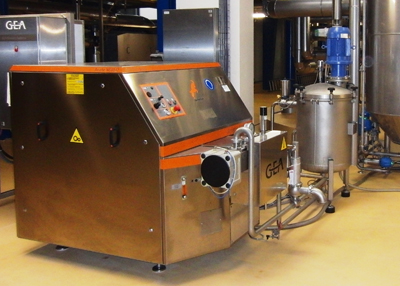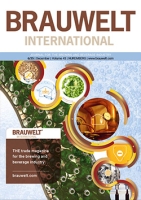China Brew and Beverage has reinvented itself several times. Once it outgrew the confines of the convention center where it had been held up to now, it moved to the Beijing China International Exhibition Center (CIEC). There it should have enough room to expand for several more years. The exhibition center’s close proximity to the airport makes the location quite favorable; it can also be reached from other parts of Beijing without difficulty. The partnership with the Messe München is nothing new, and was already in existence in 2010 when the last China Brew and Beverage took place.
For many consumers, beer foam is an important visual attribute of beer. It is well known, that hop derived bitter components are important for a good foam quality, as measured by lacing and foam stability. Although tetrahydro-iso-alpha acids have been used widely in the industry to improve foam stability, some brewers have been looking for an alternative as tetrahydro-iso-alpha acids have a slight different bitterness profile compared to iso-alpha acids...
Estimates for the 2012 hop crop in Germany were finalized in the Hallertau on August 17th. We are pleased to attach a list comparing the crop results for 2011 with the estimates for 2012 for the world’s main growing areas.
In 2011 the world hop crop amounted to approx. 98,000 mt to 100,000 mt. 38 percent of this quantity was harvested in Germany and 29 percent in the US. An alpha quantity of approx. 10,000 mt was produced. Alpha losses from harvest to processing have been taken into account, however, processing losses and further storage losses until use of the hop products were not considered. This gives a world average alpha content of 10.3 percent. Germany produced 41 percent of the world alpha and the US 36 percent. Germany and the US are further strengthening their leading role in the world hop market.
In their joint report the Bavarian State Research Center for Agriculture (Bayerische Landesanstalt für Landwirtschaft , LfL) and the Society of Hop Research (Gesellschaft für Hopfenforschung [EV], GfH) provide information on ongoing and finished hop research projects and their results.
When exposed to sunlight, i.e. if bottled in green or white glass, beer quickly develops an off-odour usually referred to as “sunstruck-flavour”. For about 50 years, 3-methyl-2-butenthiol (MBT) has been assumed to be the only cause of lightstruck-flavour, particularly due to its very low odour threshold. Several past studies suggest that the formation of thiol is a result of isohumulone coming into contact with light, riboflavin and cysteine. New studies show that it is not only MBT which causes sunstruck-flavour in beer. To assess the impact of hops and light on sunstruck-flavour, both hopped and unhopped beers were analysed before and after illumination. ...
Until its closure in 2007, new hop variety development in England was carried out at Wye College in Kent. Through the determined efforts of the National Hop Association of England the hop breeding programme is being continued by their new subsidiary company called Wye Hops Ltd. Since 2007, it has overseen the development of three new dwarf hop varieties which are described here.
GEA Brewery Systems GmbH has developed a method for the efficient use of hop extract. For an industrial application of this method they also integrated a homogenizer of their affiliated company GEA Niro Soavi. Such homogenizers are well known and proven e.g. in the field of milk treatment.
This month, 4 new hop varieties were officially launched. These new varieties were bred in the Hop Research Institute in Hüll, Germany and are characterized by their unique flavours. As dry hopping becomes increasingly popular in the brewing industry, especially among craft brewers worldwide, these flavours, which re-appear in the finished beer, will no doubt make an important contribution to overall beer aroma. ...
During the production of beverages or in terms of quality control, the question often arises as to which yeast species occur in which beverage as starter cultures or as spoilers? The species name should direct beverage microbiologists and technologists to information that is available about species’ specific spoilage and fermentation characteristics. This review provides an overview regarding the yeast flora present in beverage processes in general and provides guidance on how this yeast flora can be identified at the level of genus, species or strain. Additionally, beverage-specific technological and microbiological information about specific yeast species is included. Yeasts are grouped as either inoculated or spontaneous starter cultures and as direct or indirect spoilage organisms..
Hop cultivars have been developed at the Hop Research Center Huell since 1926. Until recently, all breeding programmes pursued the objectives to develop aroma varieties of the classical European noble aroma type and high yielding, high-alpha varieties. Both groups fully satisfied the demands of growers and brewers worldwide. However, initiated by the US craft brewers and also taken up by other creative brewers worldwide novel hop-derived aroma and flavour notes in beer attracted much attention. Therefore, new breeding efforts started in 2006 which already brought forth several experimental lines which impart multifaceted floral, fruity and citrusy aroma impressions to beer..



